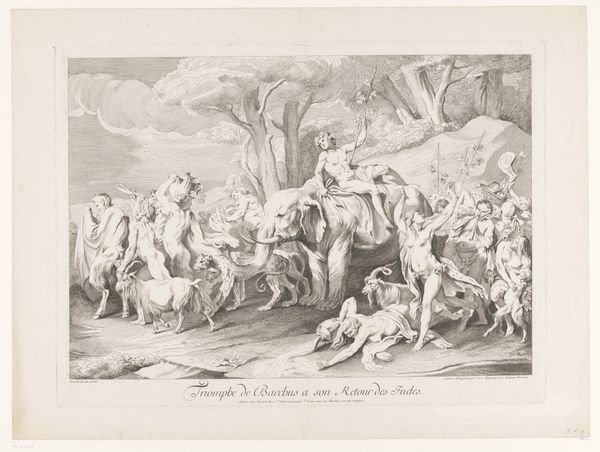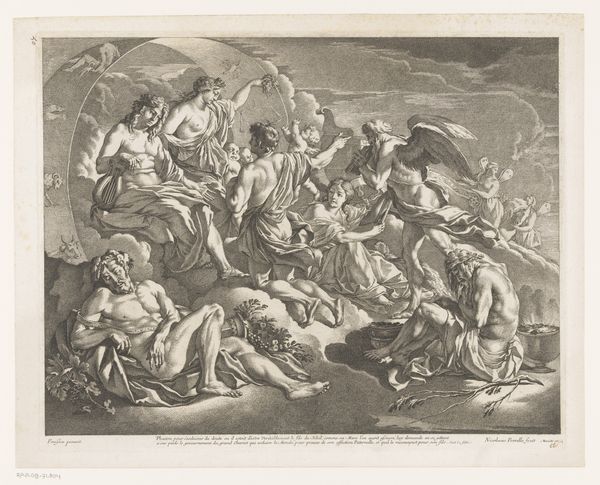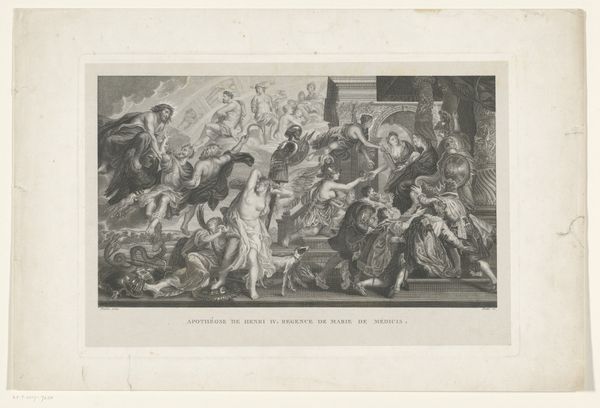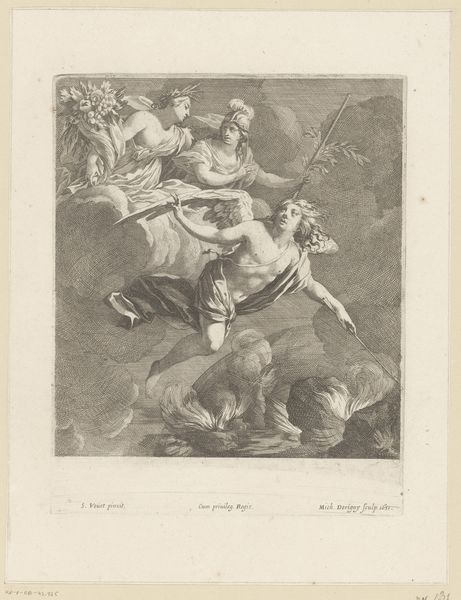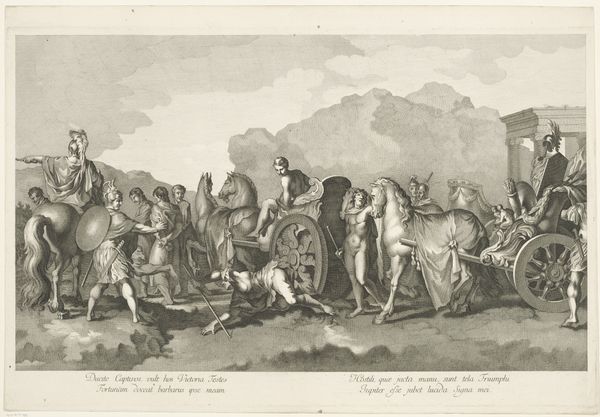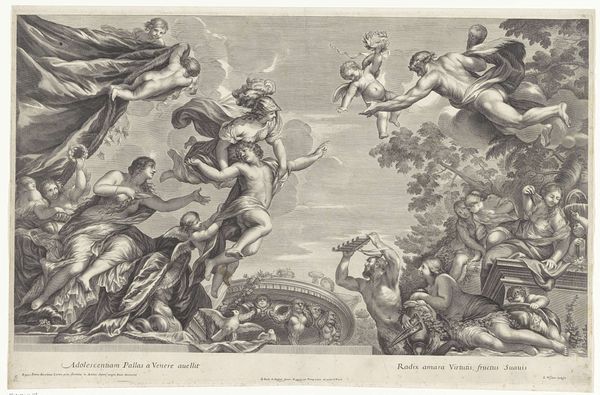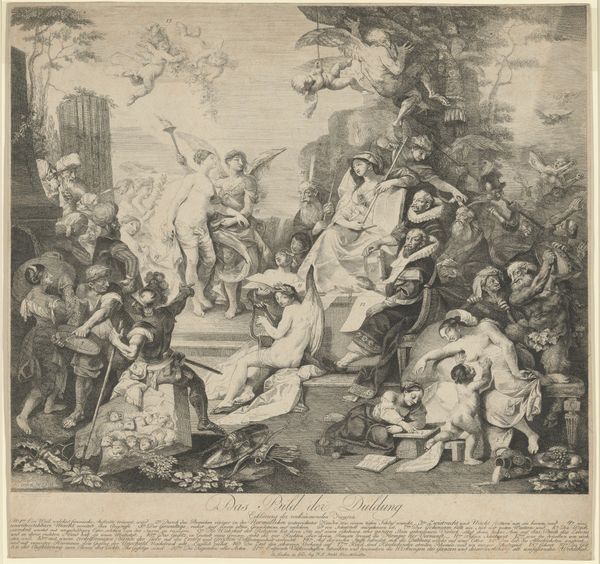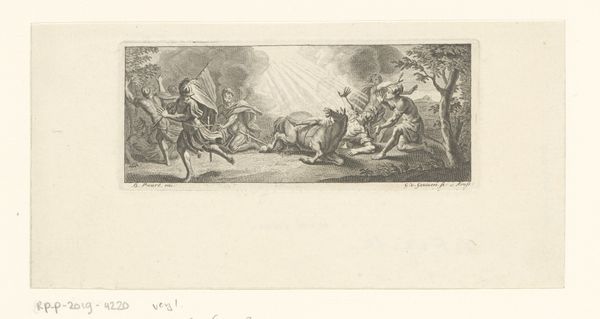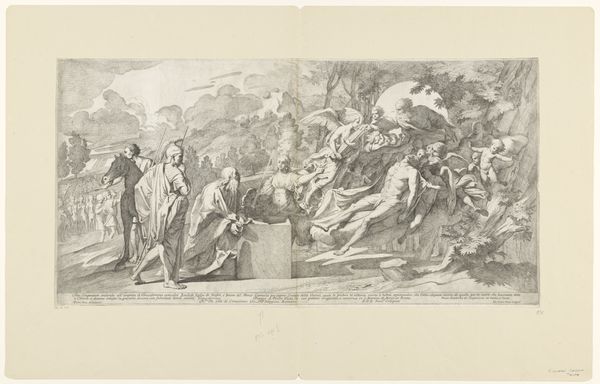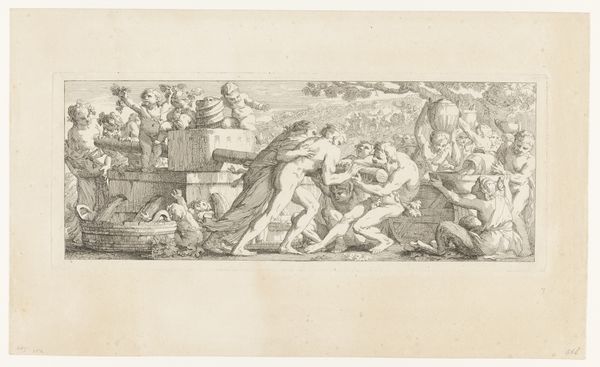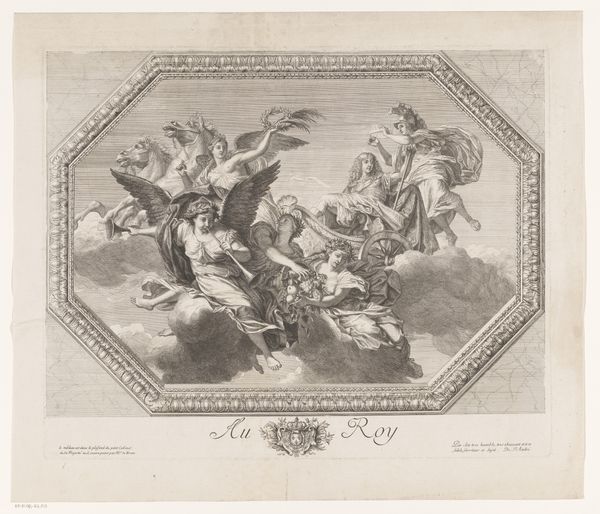
print, engraving
#
allegory
#
baroque
# print
#
figuration
#
form
#
line
#
history-painting
#
nude
#
engraving
Dimensions: height 498 mm, width 862 mm
Copyright: Rijks Museum: Open Domain
Editor: So, here we have Jean Michel Liotard's "Triomf van Venus", a print dating back to somewhere between 1717 and 1796. There’s so much going on! My initial impression is...opulent. The eye just bounces around trying to take it all in. What do you see in this piece, something maybe I missed at first glance? Curator: Ah, yes! It's like a baroque sugar rush, isn't it? But look closer – it’s an engraving, a print! Imagine the sheer control Liotard needed to achieve this level of detail with simple lines. Those cherubs wrangling… well, who knows what they’re wrangling, speaks volumes. Almost makes you feel like Venus isn’t so much in triumph, as burdened by all the excess? What do you make of that procession pulling the chariot? Are those supposed to be satyrs? Editor: Burdened! That's a great way to put it. I was so caught up in the spectacle, I didn’t really consider a deeper reading. They could be satyrs, definitely. All that fleshy drama definitely reads differently now...It seems much darker all of a sudden. Curator: Precisely! The "triumph" can be a bit… deceptive. Notice how the light falls, almost theatrically. It elevates Venus, sure, but it also casts long shadows, hinting at something less celebratory. What is the cost of beauty, one wonders... Look, too, at the cherubic faces. Do they look mischievous, as one might expect? Or almost… weary? Editor: Wow, now that you mention it, some do look less than thrilled to be pulling this thing! Maybe it is a commentary on the weight of expectation placed on beauty. I originally thought it was all pomp and circumstance, but seeing the less joyful side adds so much more complexity. I’ll never look at a 'Triumph' the same way. Curator: Nor should you. Every line tells a story, even in paradise. Now, go forth and see shadows where others only find sunshine!
Comments
No comments
Be the first to comment and join the conversation on the ultimate creative platform.
